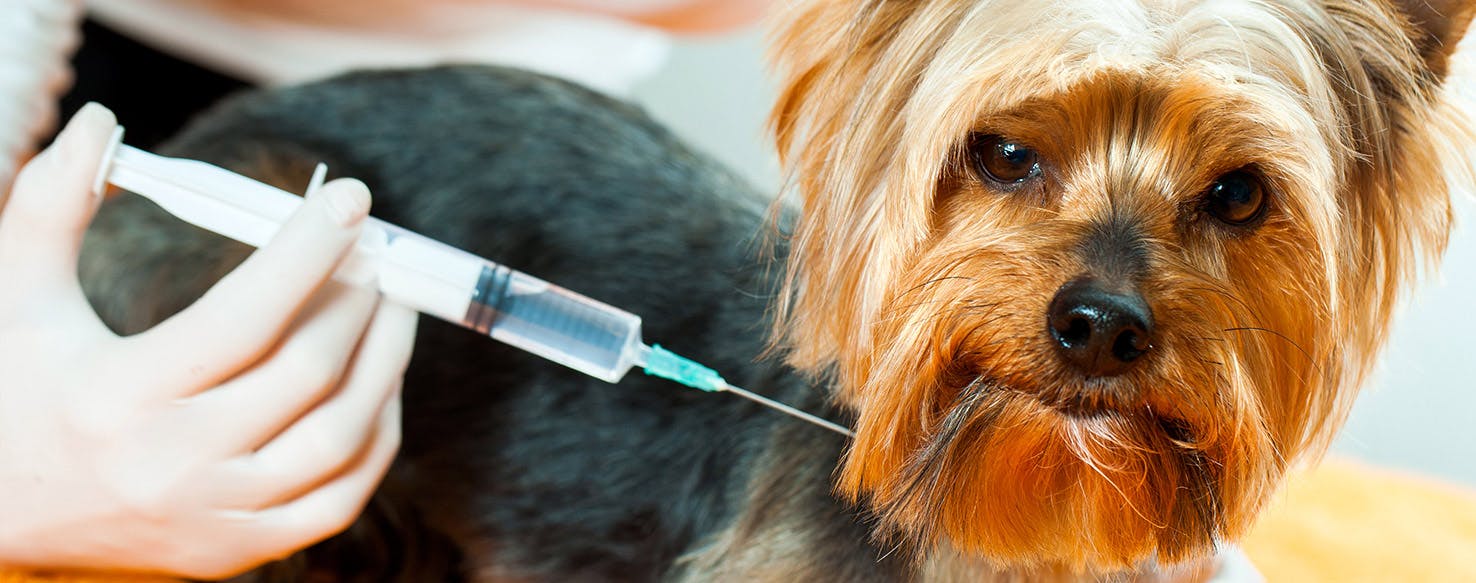- Home
- Dog Wellness
- Staying Safe With Anesthetics for Your Dog
3 min read
Staying Safe With Anesthetics for Your Dog

Save on pet insurance for your pet
You don't have to choose between your pet and your wallet when it comes to expensive vet visits. Prepare ahead of time for unexpected vet bills by finding the pawfect pet insurance.
Your dog doesn't argue back, they always want to see you and are always happy to clean your floors of food, so watching your beloved dog being wheeled away for surgery is a heart-wrenching experience. Your furry companion will probably be anesthetized to ensure they feel no pain and to allow the vet to work quickly and effectively.
However, a number of dogs die every year from adverse effects of anesthetics. Understandably, such strong medication brings with it a serious risk of complications. This article will offer you some straightforward tips to help give your dog the best chance of alleviating the risks associated with anesthetics for surgery.
What Are the Risks?
Before looking at how to alleviate the risks that come with anesthetics, let’s first look at what exactly they are. It must be noted there is always a risk your canine friend won’t wake up when they go into surgery anesthetized. A study of 98,000 dogs called the 'Confidential Enquiry into Perioperative Small Animal Fatalities’, found that just 1.4% of ill dogs died as a result of anesthetic complications. Thankfully, that is relatively low, but it is worth noting that older dogs and dogs with compromised immune systems run a greater risk of complications. The study also highlighted that the biggest threat of problems comes within the first three hours of the operation, so ensuring your dog is in a facility where they will be properly monitored and supervised post-operation is advisable. If you would like further information about the risks associated with anesthetics, your dog's vet will be able to advise you.
Pre-Anesthetic Tests
Anesthetics are drugs given by injection or gas that will render your dog unconscious, preventing them from feeling any pain or discomfort. While usually safe, they do come with a risk of complications. Some dogs may be allergic to the drugs used and suffer a serious adverse reaction.
Fortunately, you can minimize those risks by having your dog’s blood and urine tested. Not only are these procedures easy and relatively cheap, but they could potentially save your dog’s life. The tests will highlight any kidney problems, anemia, and diabetes, all of which could make the difference between a successful operation and a disastrous one. For further advice and guidance on which pre-tests your dog could have, consult your local vet.
Preparing Your Dog
You can make staying safe with anesthetics straightforward and alleviate a number of risks by properly preparing your dog. It is essential your dog has a completely empty stomach when the anesthetic is administered. That means you should not feed your dog any food after midnight for an operation the next day.
It is also important your dog has had plenty of access to water and has had a good opportunity to relieve themselves in the morning before an operation. These simple steps will ensure your dog’s body is in the optimum state to respond to the anesthetic.
Key Take Away Points
Many dogs, at some point, will require serious enough surgery that an anesthetic is needed. While anesthetics do come with a risk of complications, that risk is relatively low. The risks will be minimized by urine and blood tests to identify any potential red flags. Also, ensuring your dog has an empty stomach, is properly hydrated, and has had an adequate potty break before an operation will reduce the chances of anesthetic-related complications from surgery.
You may also like
